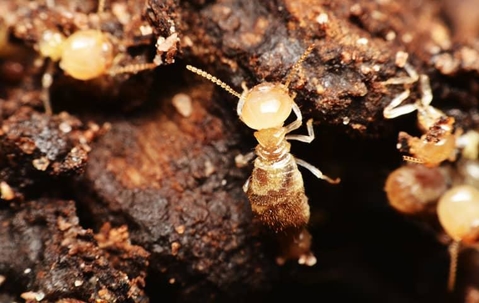Hopefully, you’ve never had to deal with the stress of a termite infestation in your home. These tiny insects can cause devastating damage to your property and can be stubbornly difficult to get rid of. But even if you’ve been lucky enough to avoid termites, you may have wondered how people get termites and what factors attract them. So, if you want to know more about termites in Salt Lake City homes, keep on reading.
About Termites
There are thousands of different species of termites in the world that differ in size and habitat. They come as small as 1/8 to as big as 1 inch in length and can be found everywhere from the deep forest to the dry savannah. Termites feed on cellulose-based plants and trees, which is why they are so fond of the wooden materials and structures in our homes.
Termite species can be separated into three main categories based on their habitat and behaviors. Dampwood termites prefer rotting logs and moist wooden environments. Drywood termites can be found living in the dry wood they infest around your property. And the most common home-invading type, subterranean termites, build their colonies underground and build tunnels to attach their home to yours.
Termites are social insects with workers, soldiers, and a queen composing their social structure. A termite colony can have hundreds of thousands or even millions of members and a termite queen can lay up to 30,000 eggs in a single day. Termite workers can eat nonstop all day night, and in large numbers, they can completely destroy your home over time.
What Attracts Termites?
There are a number of factors that attract termites to your home. Some might be out of your control, but others are easily adjusted.
First and foremost, termites are attracted to moisture. If you have water accumulating around your property, it could be highly attractive to termites. Leaky fixtures, clogged drains, and even excess condensation are all common causes. Addressing moisture issues can also reduce the presence of other common household pests like spiders and cockroaches.
Wood-to-soil contact is also the main cause of termite infestation. If wooden segments of your property are directly touching moist soil, it’s an open invitation for a termite feast.
Landscaping factors are also important to consider. Gardening mulch is quite appetizing for termites as well as any fallen trees, rotting logs, or decaying wood on your property.
How To Prevent Termites
Although a termite infestation is difficult to eliminate once it's developed, you can take important preventive steps to make your home less attractive to termites:
- Reduce moisture – Consider installing a dehumidifier in your basement to reduce the amount of moisture in your home. Seal leaking pipes and fixtures and clear drains and gutters to eliminate any water accumulating around your property.
- Address landscaping issues – Remove decaying wood or plants around your property. Switch to a cellulose-free mulch and consider pulling back your garden or shrubs a few feet from the house.
- Prevent direct soil-to-wood contact – Constructing a rock barrier around the perimeter of your home can reduce the likelihood of termite infestation. Protect any wooden segments of your property that are making direct contact with the soil by installing a barrier of rocks.
While you can take measures to defend your home from termites, an infestation can still occur. That’s why professional assistance is your best bet for protecting your home from lasting damage. At White Knight Pest Control, we have more than 15 years of experience in solving termite problems. With industry-leading Termidor® treatment, we will eliminate your termites at the source. Contact us today for your free estimate.

